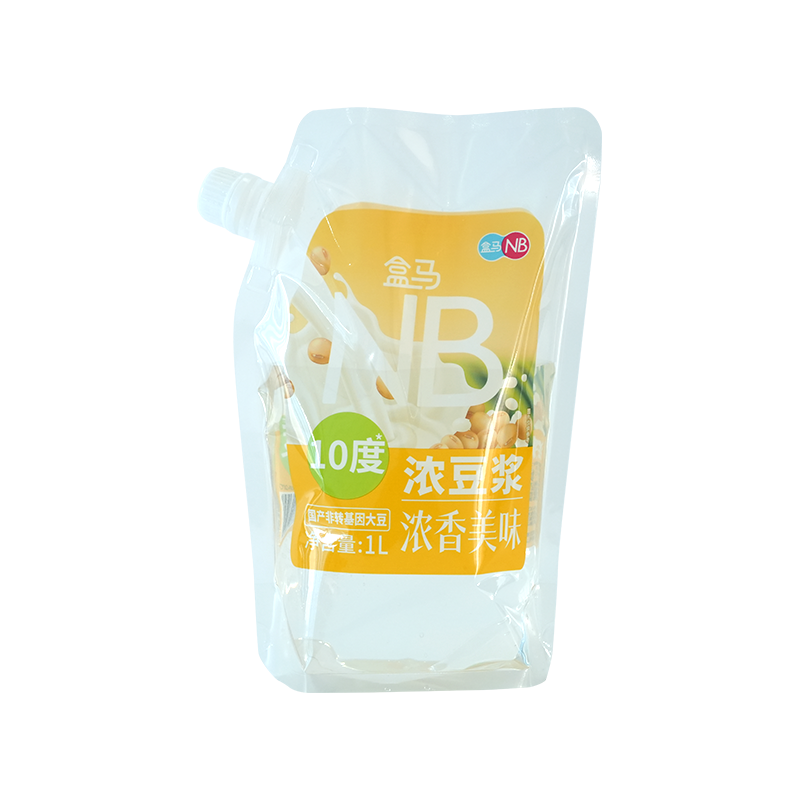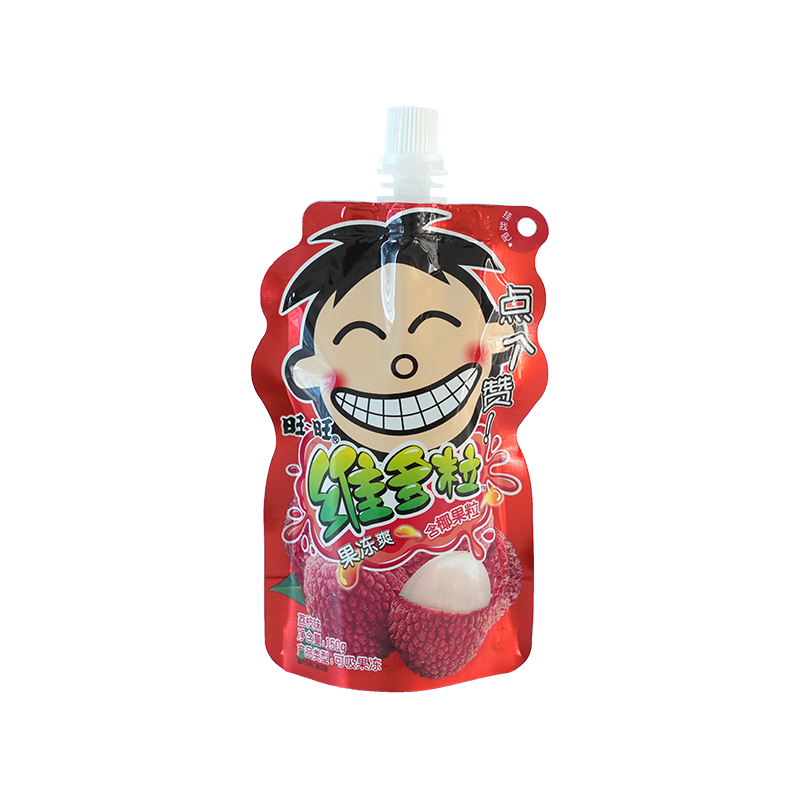In the field of modern food packaging, stand-up spout bags for soy milk have become an ideal packaging form for liquid foods such as soy milk due to their convenience, practicality and environmental friendliness. This packaging is not only easy to carry, but also effectively maintains the freshness and safety of food. However, behind its excellent performance, it is inseparable from a key manufacturing process-dry lamination.
Dry lamination is a process that tightly combines two or more materials by coating adhesives. It plays a vital role in the production of stand-up spout bags for soy milk. The core of this process is to laminate printed plastic films (such as polyethylene PE, polypropylene PP, etc.) with one or more barrier layer materials (such as aluminum foil, nylon, polyester PET, etc.) to form a composite material with high strength and excellent barrier properties. This composite material can not only withstand various stresses during packaging and transportation, but also effectively prevent the influence of external factors such as oxygen, moisture, light, etc. on food quality.
In the dry lamination process, the choice of adhesive is one of the key factors that determine the lamination effect. The type, performance and curing conditions of the adhesive will directly affect the strength, weather resistance, thermal stability and chemical stability of the composite material. For the upright spout bag of soy milk, the adhesive must not only have sufficient strength and toughness to withstand the stretching and extrusion of the bag, but also have excellent barrier properties to prevent oxygen, moisture, etc. from penetrating the bag and affecting the freshness and safety of the soy milk.
When selecting adhesives, producers need to comprehensively consider factors such as material compatibility, curing speed, curing temperature and cost. For example, for packaging that needs to withstand higher temperatures, adhesives with good thermal stability should be selected; for food that needs to be stored for a long time, adhesives with excellent barrier properties should be selected. In addition, with the improvement of environmental awareness, bio-based and degradable adhesives have gradually become a hot spot in the market. They can not only reduce environmental pollution, but also enhance the environmental image of the product.
Coating uniformity is another important link in the dry composite process. The uniform distribution of adhesives on the surface of the film is the key to ensuring the quality of the composite. If the coating is uneven, it will lead to a decrease in the local strength of the composite material, and even produce defects such as bubbles and delamination, which will seriously affect the performance and safety of the bag.
In order to achieve uniform coating of adhesive, producers need to use high-precision coating equipment and processes. For example, use precise coating heads, adjust coating speed, control coating amount, etc. to ensure that the adhesive forms a uniform and continuous coating on the film surface. In addition, strict testing of the coated film is required, such as using a microscope to observe the uniformity of the coating, using a tensile tester to test the strength of the composite material, etc., to ensure that the composite quality meets the standard requirements.
In the dry composite process, the control of temperature and pressure is the guarantee for perfect composite. Temperature not only affects the degree of activation and curing speed of the adhesive, but also affects the thermal stability and chemical stability of the material. Pressure affects the close contact between materials and the removal of bubbles.
In the dry composite process, temperature control is crucial. If the temperature is too low, the adhesive cannot be fully activated, resulting in reduced composite strength; if the temperature is too high, it may cause thermal degradation of the material or premature curing of the adhesive, affecting the composite quality. Therefore, producers need to accurately set the temperature during the composite process according to the type of adhesive, curing conditions and thermal stability of the material.
In order to achieve precise temperature control, producers usually use heating methods such as heating plates and hot air circulation, as well as monitoring equipment such as temperature sensors and temperature controllers to ensure that the temperature during the composite process is always kept within the set range. In addition, the heating equipment and monitoring equipment need to be regularly maintained and calibrated to ensure their accuracy and stability.
In the dry composite process, pressure control is equally important. Moderate pressure helps to achieve close contact between materials, promotes uniform distribution of adhesives and the removal of bubbles. If the pressure is insufficient, gaps between materials will occur, affecting the composite strength; if the pressure is too high, it may damage the materials or cause excessive adhesive extrusion, forming pollution.
In order to achieve precise pressure control, producers usually use pressurization methods such as rollers and air pressure, as well as monitoring equipment such as pressure sensors and pressure controllers to ensure that the pressure during the composite process is always kept within the set range. In addition, the pressurization equipment and monitoring equipment need to be regularly maintained and calibrated to ensure their accuracy and stability.
With the continuous improvement of material performance, environmental protection and cost-effectiveness in the food packaging industry, the application of dry composite process in the production of soy milk upright nozzle bags will also face more challenges and opportunities. On the one hand, producers need to continuously develop new adhesives and coating technologies to improve the performance of composite materials, reduce costs and environmental pollution; on the other hand, they also need to strengthen cooperation and exchanges with other fields, such as materials science and chemical engineering, to promote the innovation and development of dry composite processes.
As consumers pay more attention to the safety and environmental protection of food packaging, producers also need to strengthen product quality control and supervision to ensure the safety and reliability of dry composite processes in the production of soy milk upright spout bags. By continuously optimizing the production process and improving product quality, soy milk upright spout bags will better meet consumer needs and market development trends, and contribute to the sustainable development of the food packaging industry.
Dry composite processes play a vital role in the production of soy milk upright spout bags. By precisely controlling the selection of adhesives, coating uniformity, and key parameters such as temperature and pressure during the composite process, producers can produce soy milk upright spout bags with high strength, excellent barrier properties and good safety, providing consumers with a more convenient, safe and environmentally friendly drinking experience.








